Les meets Luigi, and a decade-long quixotic quest ends in triumph
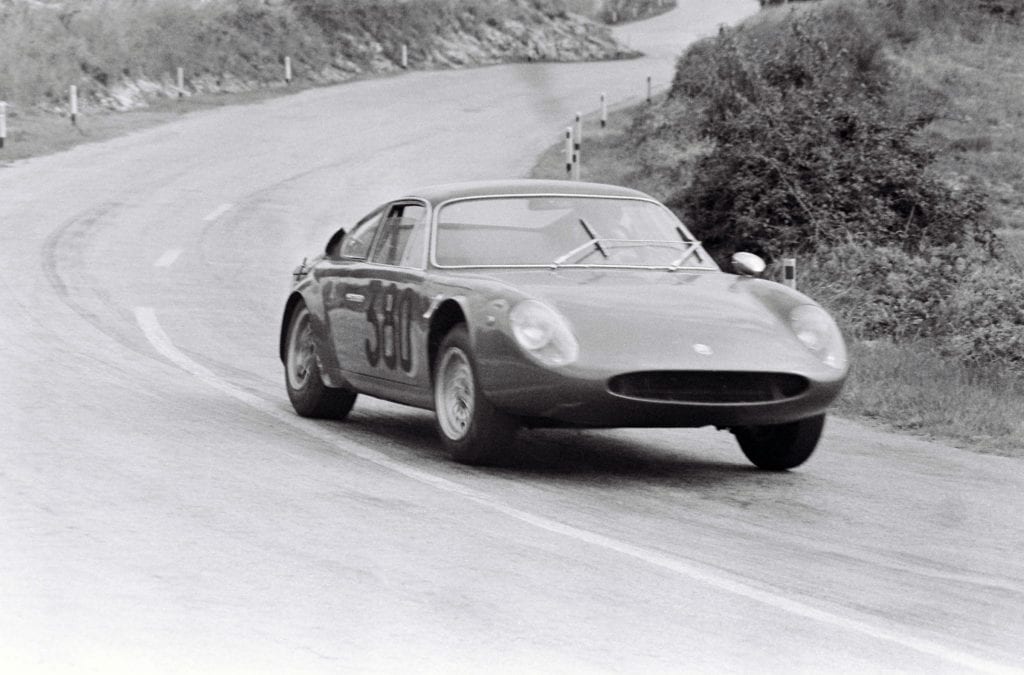
Ponce de Leon searched for the Fountain of Youth. Captain Ahab hunted Moby Dick. Les Burd’s obsession was finding the original owner of his prized Abarth Simca, chassis number 136 0117.
So what if it took him 10 years? There were critical questions to ask. Such as what on earth had happened to that original magnesium shift-plate housing.
“My decade-long search for the original owner did become a bit of an obsession,” concedes Burd, who had spent eight years restoring No. 136 0117. “An obsession which ended in true elation when I finally found him.”
That happened last month in the Italian town of Frosinone, between Rome and Naples, where Burd was treated to a hero’s welcome and (of course) a party. But before that there were years of false starts and dead ends. Burd never abandoned his search, because, he explains, “I am severely afflicted with this car.”
No kidding.
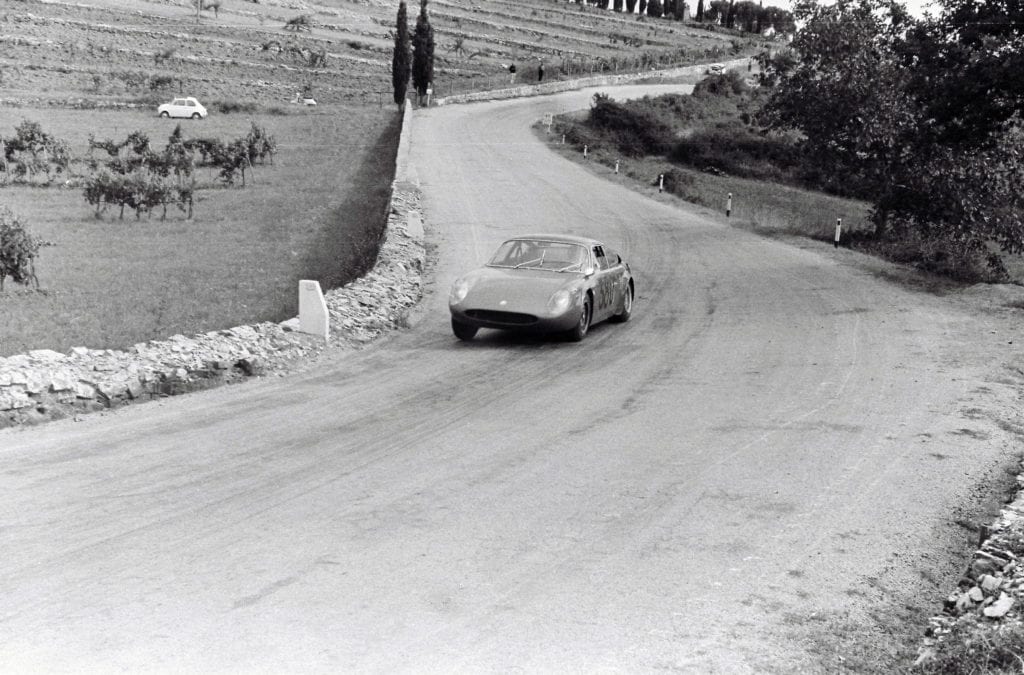
Burd’s road to Frosinone was unusual, even among crazed car collectors and restorers, which is to say most of them. For one thing, tracking down a car’s original owner often is either impossible (many have died) or impractical. For another, Abarths are an uncommon obsession compared to, say, Ferraris or Porsches.
Carlo Abarth (pronounced AH-barth), an Austrian working in Italy, founded his company in 1949, acquiring assets of the defunct Cisitlaia racing shop. He adopted his horoscope sign, the scorpion, as his company’s logo. While his Turin neighbor, Enzo Ferrari, was turning out thoroughbred supercars, Abarth produced kits that converted tiny, inexpensive Fiats and Simcas into veritable pocket rockets.
He used those same modest mechanical components to turn a few of those cars into machines that dominated international small-displacement racing during the 1960s. That’s when a young man named Les Burd, now age 67, was coming of age in California.
Burd’s father worked for Republic Aviation, manufacturer of the P-47 Thunderbolt (critical to the U.S. during World War II) and the F-105 Thunderchief. Irving Burd also tinkered on car engines when possible. “My dad had the passion-for-cars ‘disease,’ ” says Burd. “I caught it from him.”
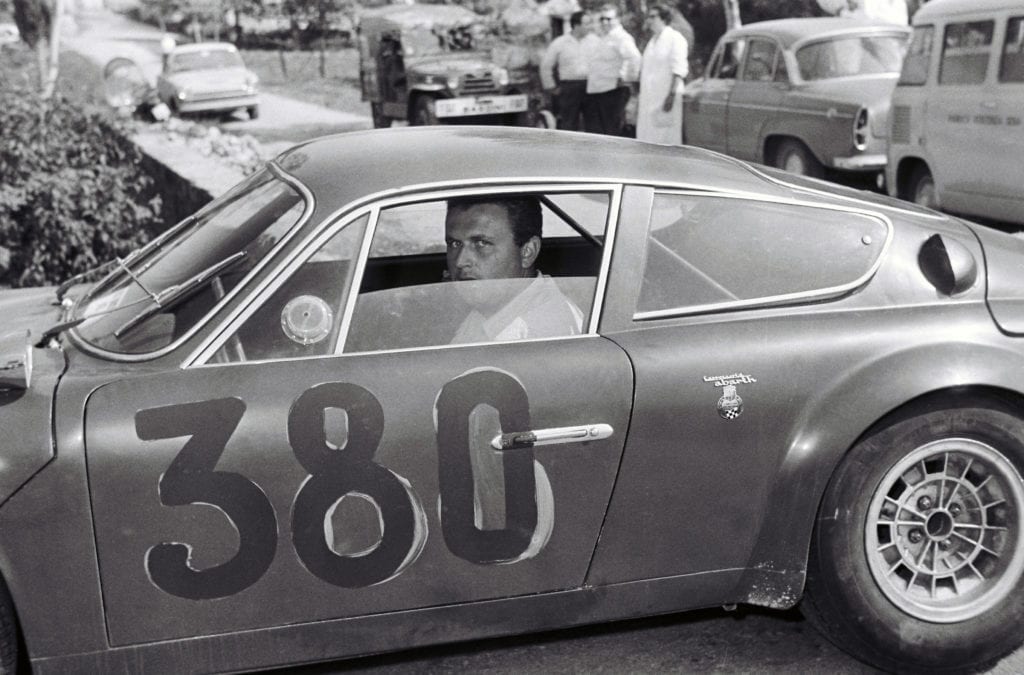
For a teen-ager helping pay his way through college, Abarths had the emotional allure of speed and the practical appeal of affordability. Burd bought his first one, a 1959 Double Bubble Zagato in 1967 for $650. It came with a jug of water because the radiator leaked, and the seller wanted to be sure Burd could make it home. A year later Burd spent $350 for an Abarth 800 Record Monza Zagato with a damaged nose. He towed that one home with a rope.
During his successful business career Burd remained devoted to the marque. (Abarth is now part of Fiat which relaunched the brand in 2007) He spent some of his spare time restoring Abarths in Berkeley, Calif. at Epifani Restorations, a place that Britain’s BBC once dubbed “Berkeley’s other counter-culture.”
Car No. 136 0117, a rare long-nosed Abarth Simca, was built in 1965, during the marque’s heyday. Burd bought it 39 years later, and began poring over old documents and photographs to learn how the car looked and was configured when it was built. What did the original enamel badge on the nose look like (Abarth had changed the design of its scorpion logo several times over the years)? Was the original transmission a four-speed or six-speed? It was the latter.
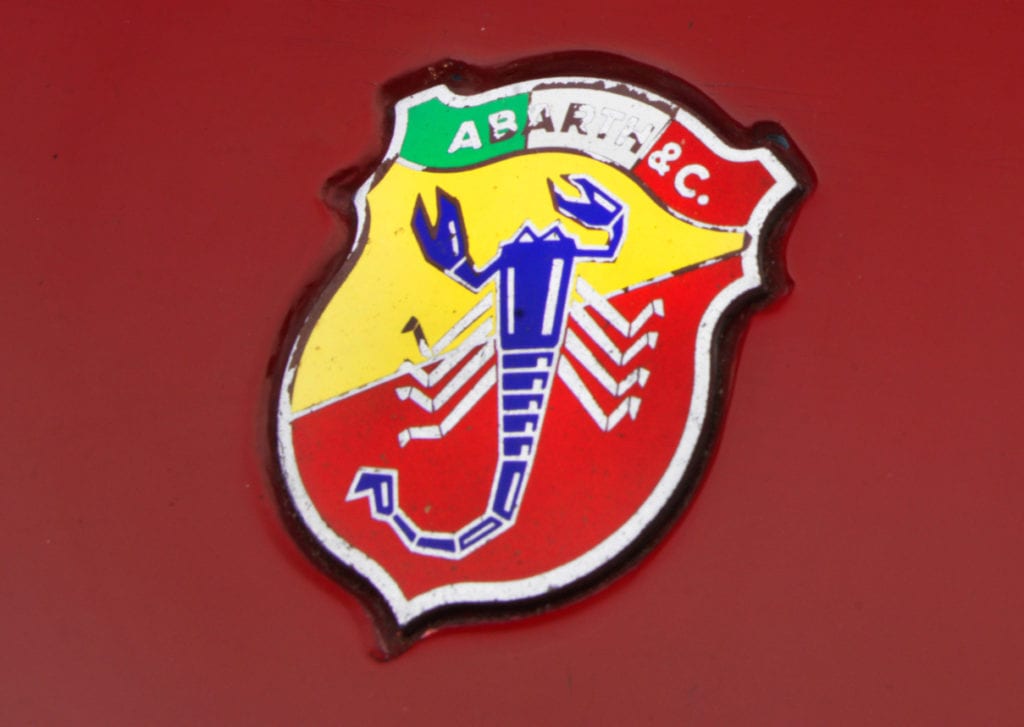
The quest to find the car’s original owner hit a dead end, literally, when Burd learned that a Rhode Island man who had once owned 136 0117 had died. But by searching through old Abarth club newsletters, Burd found a man in New York, still living, who had sold it to the Rhode Island owner. The trail eventually led to Italy, and Luigi Marignani.
Burd had not previously heard of Marignani, an 80-year-old retired businessman. He learned that Marignani had not only had owned 0117 but — seemingly a reward for Burd’s persistence — also had raced the car successfully in the 1960s. So it was that after a year of correspondence, last month Burd and his wife Louise were driven to Marignani’s two-building compound in Frosinone. Neither was prepared for the reception they would get.
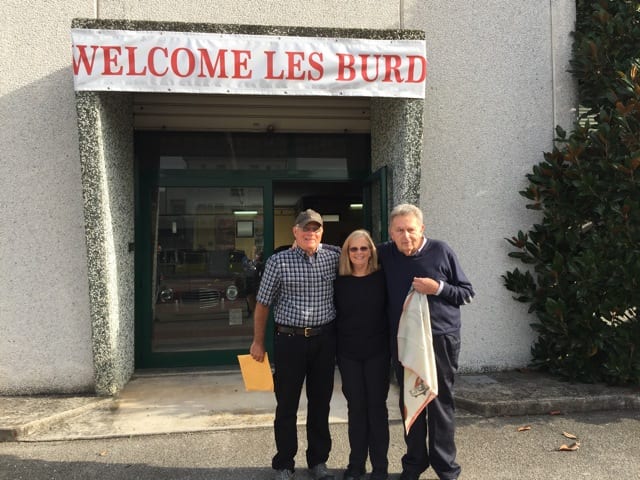
WELCOME LES BURD, shouted a huge, red-letter banner, professionally printed, that hung across the door to one of the buildings. Inside was Marignani’s collection of Abarths, SIATAs, Fiats, Alfas, Porsches, Ferrari, Lancias, a flock of motorcycles, plenty of wine, pasta and other food, some 40 guests, two journalists and two photographers.
Marignani gave a 30-minute welcoming address. He also gave Burd a plaque commemorating their meeting, and presented a slide-show of the Burd family displaying 0117, now known as the Burd Abarth Simca, at the 2014 Pebble Beach Concours d’Elegance. Marignani doesn’t speak English, nor Bird Italian, but the two men communicated through an interpreter and through that international language called Car. It was “two disciples of the genius of Carlo Abarth,” says Burd, “making a cosmic connection.”
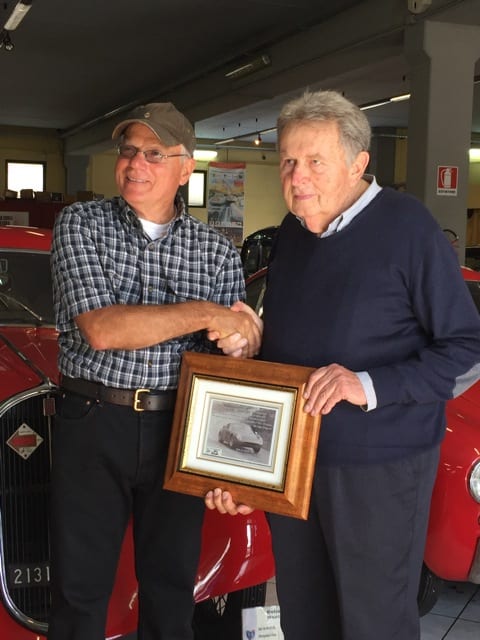
Through the interpreter, Burd got the chance to ask Marignani about that missing magnesium shift-plate housing. “I had always assumed that the housing was removed in the United States after Luigi sold the car,” he says. “It turns out that assumption was wrong. Luigi told me that during his racing days, he felt the housing was slowing his shifting so he himself had it removed.”
When Burd thereupon suggested that the two men should start looking for the missing housing, right then and there, he and Marignani shared a laugh.
Some hours later, Les and Louise Burd climbed back into the car they had hired and their driver took them back to Naples, stopping en route for pizza at the driver’s favorite place. The meeting with Marignani had, finally, sated his decade-long obsession. “Our destiny was to meet in Italy,” says “The appointment was made, perhaps 50 years ago, in the cosmic-car-guy appointment ledger.”

